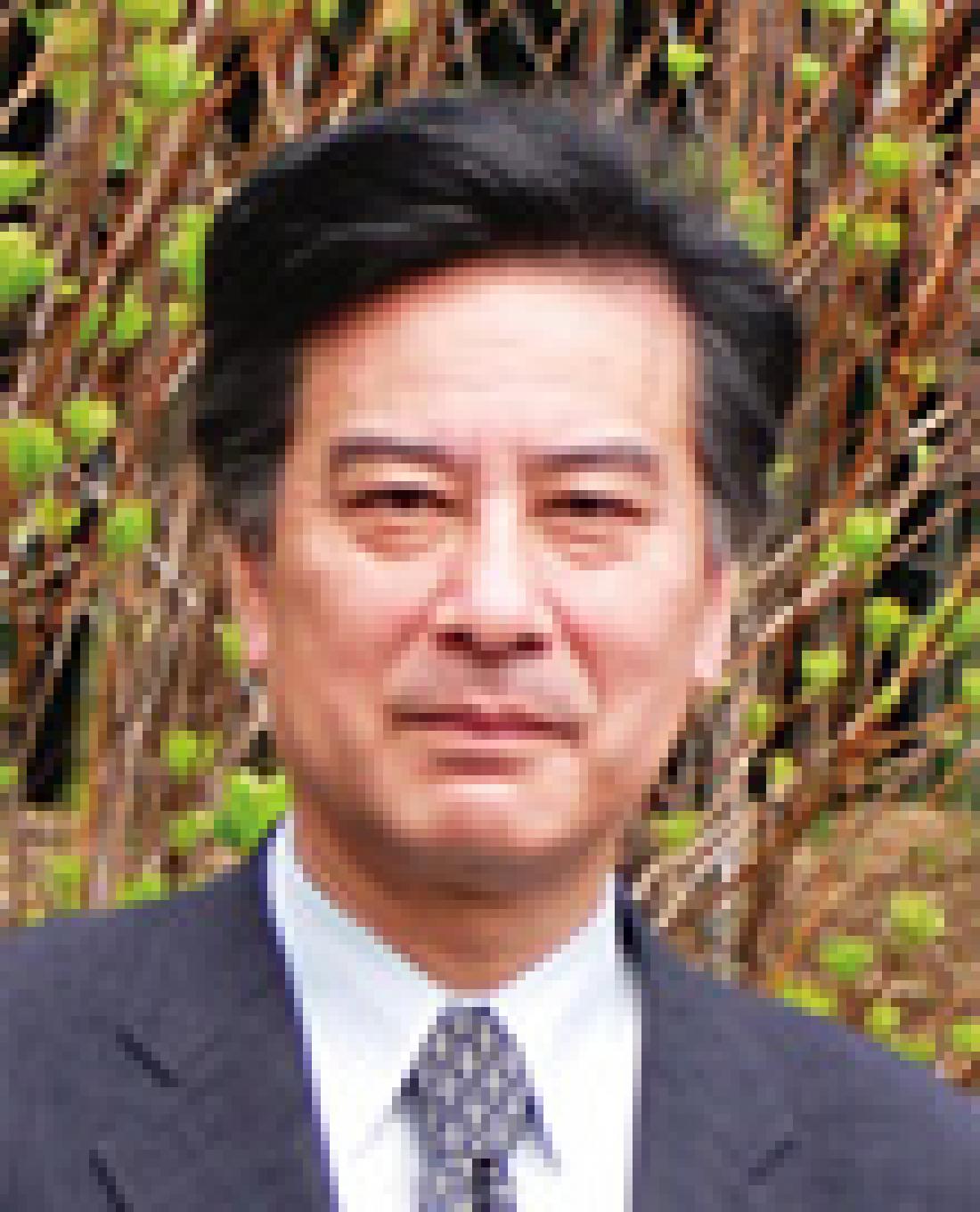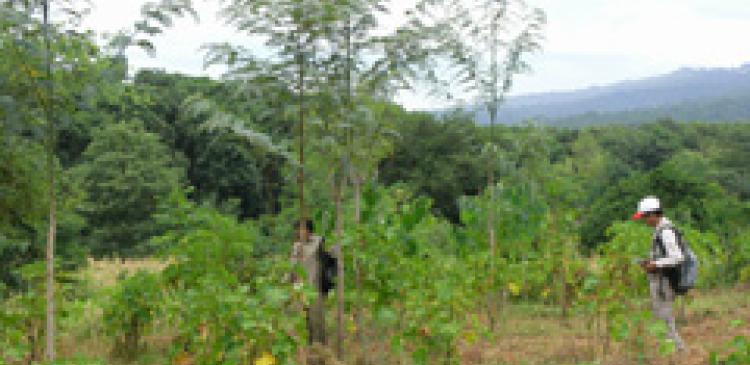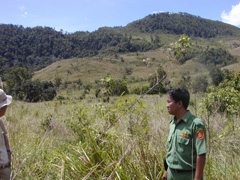Yasushi Morikawa
Yasushi Morikawa
Professor, Faculty of Human Sciences, Waseda University
Conservation of the Diversity of the Heart for the Conservation of Biodiversity
To put it simply, the conservation of biodiversity calls for protecting precious living organisms. But it is difficult to explain the true significance of biodiversity conservation. For example, there is the question of whether or not this action should go as far as protecting hazardous organisms such as the tropical malaria vector anopheline mosquito or the poisonous Habu snake of Okinawa, because this is where the human ego factors in. In a broad sense, the conservation of biodiversity is the conservation of landscapes and the ecosystem. In a smaller sense, it is the conservation of species and genes. One goal of this conservation of species or genes is to preserve genes that may someday be of service to mankind. So the question that we must consider, then, is how we should undertake the conservation of biodiversity.
Now then, what about the humans who try to protect biodiversity? It is my contention that biodiversity conservation must comprise the conservation of diversity in people’s hearts. For example, if you ask kindergarteners when strawberries can be harvested, many of them would probably tell you that they can be harvested in December because they think of Christmas shortcakes, or they may even tell you that they can be harvested all year round. It is the same with vegetables such as tomatoes and cucumbers because you can get them any time of the year now. This is what takes away the sense of season or inspiration from food. An extreme way of describing this is to say that the same things are being eaten by everyone throughout Japan. The advance of establishments such as fast food shops and convenience stores are making us lose our sense of interest in the food we eat.
It seems that the diversity in our hearts is vanishing as community-based food cultures gradually disappear along with regional differences. It is no stretch to draw a causal connection between the disappearance of diversity in our hearts and the disappearance of biodiversity. In fact, it is plain to see how important the conservation of the diversity of our hearts is when considering the sound sustainability of human society and the international society.
There are no nonconforming elements where there is diversity, but nonconforming elements tend to get excluded when there is virtual uniformity with no diversity. This is also a part of the reason why there is bullying at schools, which is a current issue in Japan. The important thing is to reaffirm the diversity of our hearts if we are going to promote the conservation of biodiversity.
Well-Fed, Well-Bred…The Restoration of Biodiversity
Tropical deforestation has become an environmental issue on a global scale as it results in the elevation of carbon dioxide in the atmosphere and the loss of biodiversity. So how should biodiversity be conserved in tropical developing countries? Turning tropical forests into areas where swidden agriculture is practiced, and producing food including cash crops are the minimal requirements to live for local residents. Speaking from the viewpoint of biodiversity, conservation in forests may not carry any weight when telling local residents to protect tropical forests that nurture various species.
The results of our research in China show that residents of coastal regions who are making significant economic growth have expectations about the publicly beneficial functions (such as irrigation and drainage) of forests, while the impoverished residents of inland areas have expectations about timber production with forests. The priority of the impoverished residents is not in publicly beneficial functions, which do not directly bring in any cash income, but rather in answering the question of how to increase their cash income. Residents who have sufficient food and clothing understand the publicly beneficial functions of forests (they are well-bred).
So are there any measures for restoring degraded lands back to their original state as forests after they have been reduced to low production of food due to excessive burning? The answer lies in my December 2008 article, '"Earth-friendly": Is it true?'. There you will find difficulties in the afforestation of degraded lands along with the key to its success. In a word, afforestation cannot be done unless the local residents can attain regular profits from it.
We have been able to implement the "W-BRIDGE Model: Reforestation Model of Degraded Land for Benefits to Local People" with funding from the Bridgestone Corporation for research. This report shows the planting method that involves the planting and nurturing of trees over a period of thirty years and the income for the local residents that the method provides. Sustainable reforestation has been proposed, through mixed planting between trees for biofuel, which produce income immediately after they are planted (the shorter trees in the photo), trees for firewood and trees with edible leaves suitable for chaff, which produce income two to three years after they are planted (the taller trees in the photo), and trees that can be used for forestry production in twenty to thirty years (still small at the moment). The report can be viewed in Japanese, English, and Indonesian at (http://www.w-bridge.jp/).
We have begun to incorporate this W-BRIDGE Model into our biodiversity restoration project as a part of the further continuation of our research. This biodiversity restoration project is reforestation that provides the local residents with regular profits. There are forests that remain are close to their natural states on the islands of South Kalimantan, Indonesia. This is where "green corridors" that link such forests are being made (photo). This project site also has significance as a place that provides hands-on environment education on reforestation to visitors such as university students.
Yasushi Morikawa
Professor, Faculty of Human Sciences, Waseda University
[Profile]
The author was born in 1944
March 1973: Doctor of Agriculture at Graduate School of Agriculture, the University of Tokyo
April 1973: Researcher at Forestry Research Institute, Ministry of Agriculture and Forestry
1991: Leader at the Department of Plant Ecology, Forestry and Forest Products Research Institute, Ministry of Agriculture, Forestry and Fisheries
January 1995: Current post
[Related Publications]
Yasushi Morikawa, 1997, Cause of Forest Decline [Shinrin Suitai no Genin], Asahi Hyakka: World of Plants, Volume 11, pp. 254-256
Masayuki Seto, Yasushi Morikawa, and Tokutaro Ozawa, 1998, Introduction to Environmentalism for Liberal Arts Students [Bunkakei no Tame no Kankyoron Nyumon], Yuhikaku ARMA, p. 198
Yasushi Morikawa, 1999, Ecophysiology of Plants [Jyumoku no Seiri Seitai] in Tree Health Research [Jyumoku Igaku] edited by Kazuo Suzuki, Asakura Publishing Co., Ltd. pp. 83-109
Yasushi Morikawa, 2004, Evaluation and Problems Concerning Forest as CO2 Sink [Shinrin no CO2 Kyushugen Toshiteno Hyoka to Mondaiten, Kankyoshigen Kogaku], Resources and Environmental Engineering, Volume 51 Number 4, pp. 228-233
======================================
【Copyright Notice】
All of the articles, images, photographs and other content displayed above are owned by Waseda University. Permission to reproduce any content is subject to the following Terms of Use.
Terms of Use
- Content may not be used in a manner that may harm the honor or reputation of Waseda University.
- When reproducing any content, you must request permission by notifying the Office of Information and Public Relations of Waseda University through e-mail ([email protected]) and indicate the title of the media and intended date of reproduction. Unauthorized reproduction is strictly prohibited.
- Please cite clearly the source of content at the end of each article using the following format (Source: Research SEA yyyy/mm/dd).
- Content may not be altered or modified in any way. Manipulation of photographs is strictly forbidden. Use of quotations as protected under copyright law is limited to summarization or quotation of the main point.
- Use of content is protected under the copyright law. Any claims or disputes, privacy issues, or other matters related to copyrighted content not owned or controlled by Waseda University becomes the sole responsibility of the user.





